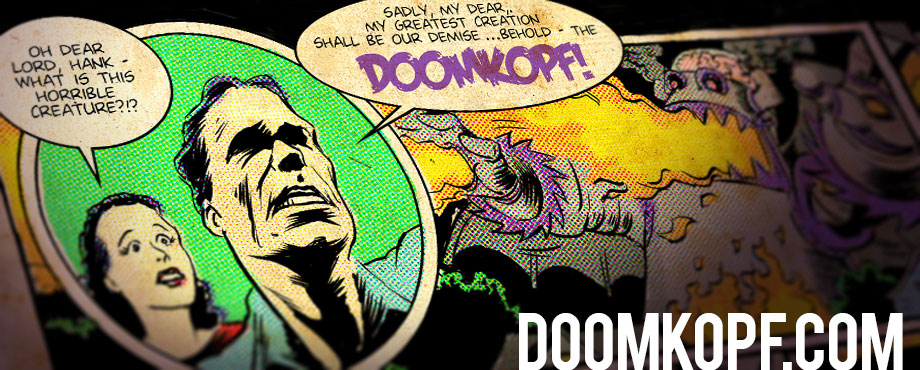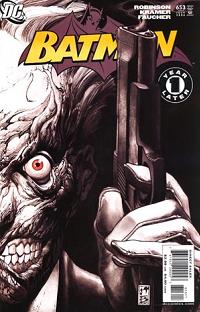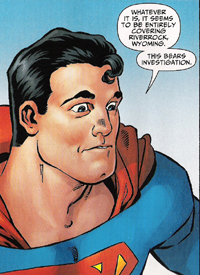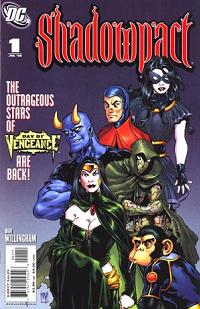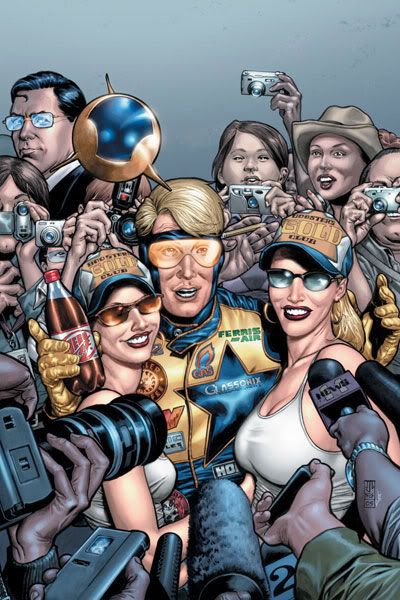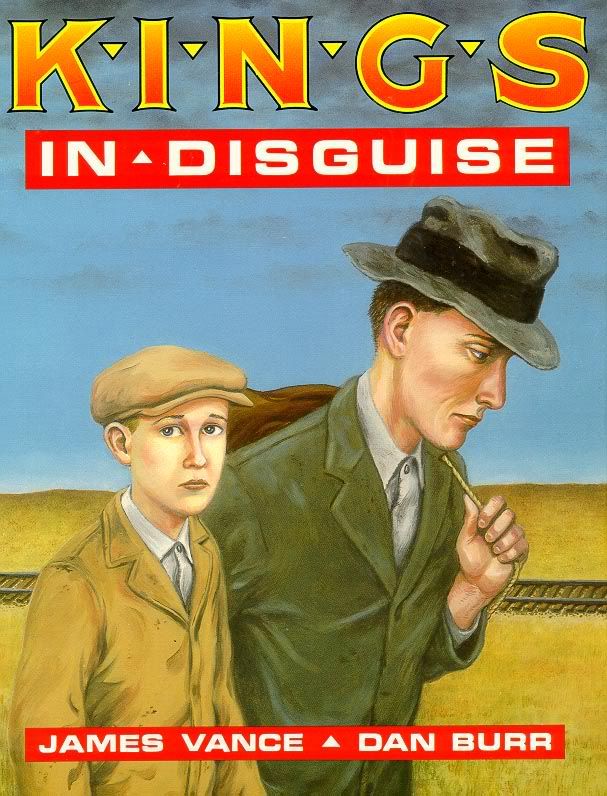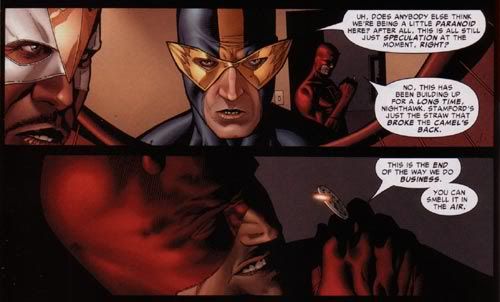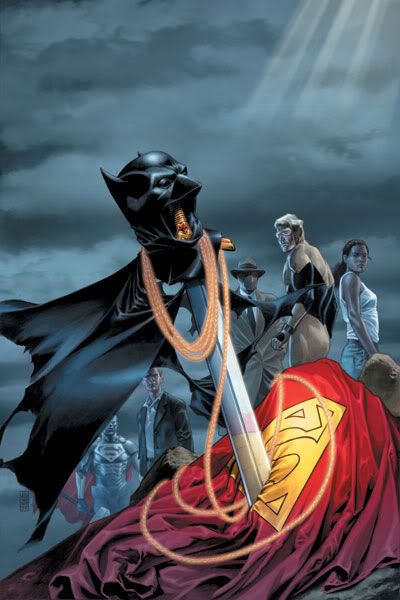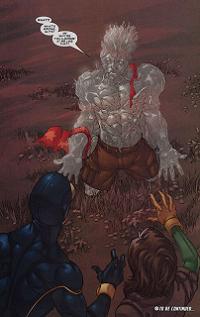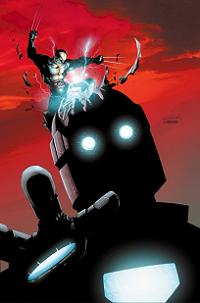Week Four
You know how you can sit down on the toilet and read an issue of a comic book by the time you’re done? Well, with this issue, I think you could finish it up before finishing up a whiz. That’s not necessarily a bad thing; I’m just saying that it goes by extremely quickly. Part of that is due in part to me trying to get used to this juggling of stories thing, I’m guessing. Giving four separate stories a bit of space in a single issue (plus, throwing on that epilogue stuff about the DCU’s history) makes it so that we aren’t allowed to focus on anything for more than a couple of pages at the most.
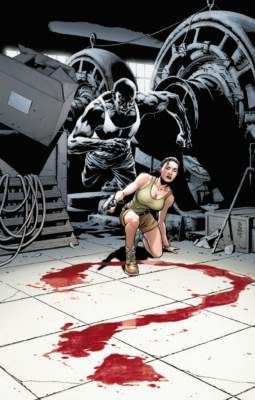
Stuff does happen in this issue, though, so let’s address that stuff. Steel was poisoned by Luthor last week, it seems, and, in this issue, judging by the cover and the weird reaction his body has during the issue, he is going to turn into a man of steel, literally. Aside from that, Ralph Dibny meets with Power Girl and some weirdos in cloaks, who supposedly are using ancient Kryptonian ideas to resurrect dead people (probably using Sue as a precursor to the eventual resurrection of Conner), and they steal his wedding band. Meanwhile, Montoya’s on a stake-out, and she, along with the Question, run into a big monster who doesn’t even feel it when she hits him with four well-placed bullets. The monster tosses some cargo at them, though, and, inside, there are a bunch of futuristic looking guns, so Montoya shoots him and the thing evaporates. Cool. At the end, some NASA jerks find that a zeta beam landed in Africa. A bunch of the heroes who were lost in space during the Rann-Thanagar War are back, and quite a bit worse for the wear. Hawkgirl’s huge, Alan Scott’s got an eye out, and the rest of them are totally screwed.
Like I said, that seems like a bunch of noteworthy stuff happens in this issue, but, believe me, it doesn’t feel like it takes you more than a minute to read through. Is that good or bad? Beats me. I like it. I like it a lot.
See ya in seven.
